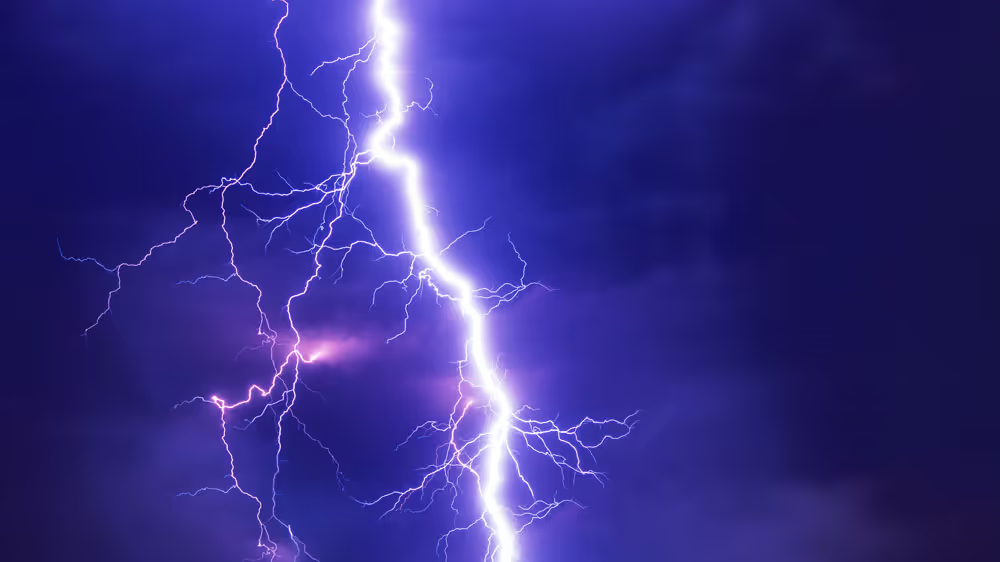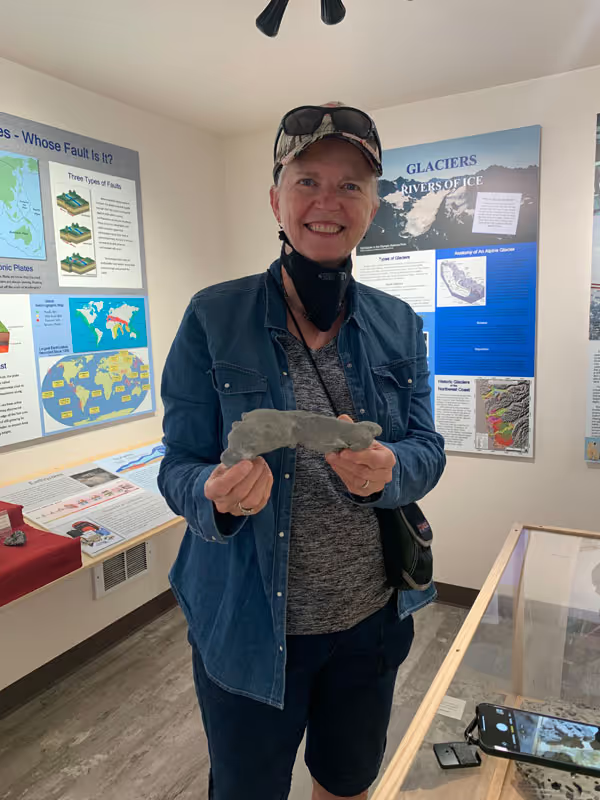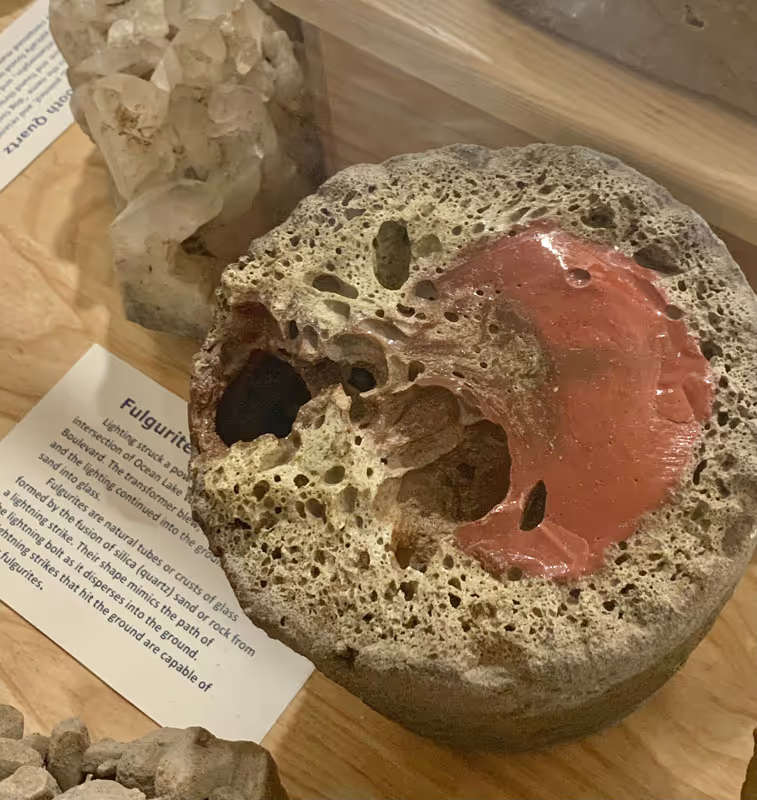The Truth About Petrified Lightning


In ancient Greece, it was believed that Zeus would hurl lightning bolts down onto the earth, leaving behind proof of his almighty powers in the form of glass, hollow artifacts known today as “fulgurites.” Fulgurites, sometimes called “petrified lightning” and “lightning stones,” are natural tubes of glass formed by the fusion of silica (quartz) sand or rock from a lightning strike. Their shape mimics the path of the lightning bolt as it hit the ground.
Fulgurites were treasured finds in ancient Greece, as it was believed they could bring miracles, power, good fortune, and good favor with Zeus. Cicero, a philosopher in the Roman Empire, used the expression conderefulmina, meaning “to dig up thunderbolts,” suggesting that early Romans also had knowledge of fulgurites.
Fast forward a few millennia, and fulgurites are still a hot topic. They appeared in the hit television series Supernatural as an instrument for summoning gods and demons. Fulgurites were also a plot point in the 2002 romantic comedy, Sweet Home Alabama starring Reese Witherspoon. In the opening scenes of the movie, two kids are seen kissing on the beach when lightning strikes a nearby metal pole. The romantic leads then see that a beautiful glass sculpture had been formed when lightning hit the sand. Hollywood took some creative liberties here, though. The “striking” glass sculptures seen in Sweet Home Alabama were in fact created by Simon Pearce Glass Company of Vermont—and they look nothing like actual fulgurites!
There are two types of fulgurites, rock and sand. Rock fulgurites, which are rarer than sand fulgurites, form like “veins inside rocks” after lightning strikes rock. They are most often found on mountains and need to be chiseled out of their surroundings. Sand fulgurites are often found on beaches or in deserts that contain dry sand that is free of fine silt and clay.
Most sand melts around temperatures of 1800 °C. So, when a lightning bolt (up to 30,000 °C) strikes sand, the silica melts almost instantly. The melting silica then fuses back together when it cools, usually forming a tube-like structure with smooth inner walls. The sand further away from the center of the lightning strike doesn’t fully melt, so it keeps part of its original shape and gives the fulgurite’s outer walls a rough, grainy shape.
Fulgurites are considered mineraloids, not minerals, because they are made up of a number of different minerals from all of the sand that was in the vicinity of the lightning strike.

They vary in size and length, with sand fulgurites averaging 1 or 2 inches in diameter and reaching up to 30 inches long.
While fulgurites can be found worldwide, they are relatively rare. One reason for their scarcity is because lightning strikes are also relatively rare. Florida sees the highest level of lightning activity in the United States with about 100 thunderstorm days per year. But, Even in Florida, the country’s lightning capital, it is still relatively uncommon for lightning to reach the ground—this only happens about 12 times a year.
In Western Washington, the Pacific’s cool, relatively dry air prevents temperature and humidity from reaching levels needed to create storm clouds, convection, and lightning. We see among the fewest thunderstorm days in the nation, usually between just five to 10 days per year, making our chances of finding fulgurites slim…but not impossible!

Sources
Doughton, Sandi. “Saturday’s Electrifying Thunderstorms were Highly Unusual – and Not Likely to Repeat Any Time Soon.” Seattle Times, https://www.seattletimes.com/seattle-news/weather/saturdays-electrifying-thunderstorms-were-highly-unusual-and-not-likely-to-repeat-any-time-soon/. Accessed 3 September 2021.
Ege, Carl. “What are Fulgurites and Where Can They Be Found?” Utah Geological Survey, https://geology.utah.gov/map-pub/survey-notes/glad-you-asked/what-are-fulgurites-and-where-can-they-be-found/. Accessed 3 September 2021.
“Fulgurites: Petrified Lightning.” Gemcoach, http://www.gemcoach.com/fulgurite-guide/. Accessed 3 September 2021.
“Fulgurites: The Power of Lightning.” National Parks Service, https://www.nps.gov/articles/grsa-fulgurites.htm. Accessed 3 September 2021.
Platt, John. “Fulgurites: When Lightning Strikes Sand, Magic is Formed.” Treehugger, https://www.treehugger.com/fulgurites-when-lightning-strikes-sand-magic-is-formed-4863909. Accessed 3 September 2021.
Rakov, Vladimir. “Lightning Makes Glass.” University of Florida, Gainesville, http://plaza.ufl.edu/rakov/Gas.html. Accessed 3 September 2021.
“What are Gemstones, Can All Minerals be Gemstones?” Gemcoach, http://www.gemcoach.com/what-are-gemstones/. Accessed 3 September 2021.
Photo 1 by Felix Mittermeier on Unsplash
© Holly Duffy, September 2021
Touch whale bones, examine shipwreck artifacts and connect with the coast's living history.

Support our mission, get involved in educational programs, or contribute through donations and volunteering.